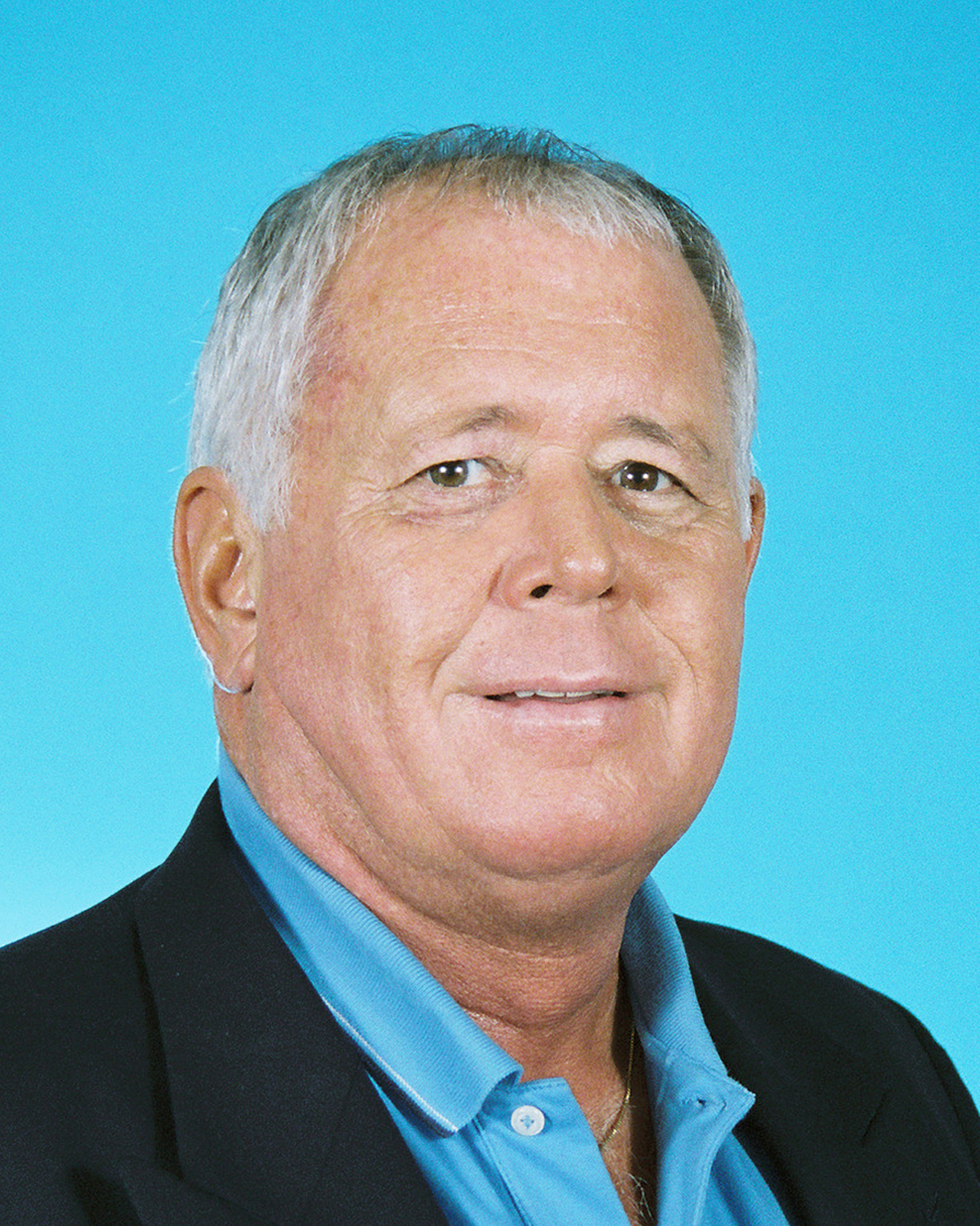|
|
|
Archive for April, 2008
Friday, April 18th, 2008
Back when I was young in the business world I heard that the way to managerial success was to hire people smarter than yourself and then get out of their way.
Seems that happens less and less these days.
It constantly amazes me how many managers state strong views from positions of extreme ignorance—and then consider their positions/comments invincible.
Nothing sways them from their chosen position—certainly not incidentals such as facts, documentation, surveys, articles, etc. They act as if changing their minds would be perceived as an act of weakness by those around them, especially subordinates.
 What do you think? What do you think?
Is it possible for anyone/anywhere/any time to know everything about any given topic, no matter how narrowly defined? Or creative enough to think of every possible shading, tangent, ramification, solution or repercussion applicable to/stemming from it?
Image credit: Gropi
Posted in Business info, Communication, Leadership | No Comments »
Friday, April 18th, 2008
Post from Leadership Turn Image credit: snackx
Monday TWR Lighting CEO Ken Meador shared information and insights on what works in his company and doing business in general; Tuesday I wrote that satisfying most people’s top four desires was more important than money if you want your people to stay.
 Considering the 11 year average tenure, TWR seems to have nailed the retention issue, but I wondered about salaries and the demographic challenge the company faces to grow, so I asked Ken. Considering the 11 year average tenure, TWR seems to have nailed the retention issue, but I wondered about salaries and the demographic challenge the company faces to grow, so I asked Ken.
Me: Are your salaries comparable to the area? Higher? Lower?
Ken: Geographically we are marginally comparable, market/competitor wise we are a bit lower. Houston is still a tight job market with plenty of jobs and limited amount of educated (legal) talent from which to draw. Those employees who make up the heart and soul of the TWR Lighting stay because they “feel” a part of, rather than apart from the company.
Me: Do have profit sharing?
Ken: No. We have a company wide bonus pool based on performance metrics, revenue, SG&A & EBITDA. Also, 11 key people in the company have been rewarded as shareholders.
me: I ask because I’ve always believed that people don’t stay for money and I think you prove that, but thought I’d better check:)
Ken: We find that those who leave for “tha money” are typically at the lower end of our employee spectrum or Gen Ys.
Me: What’s the median age of your workers?
Ken: 41
Me: What are you doing about hiring and keeping Gen Y workers?
Ken: At the moment, little. They have a different point of view regarding “work ethic”, team participation and adaptation to our culture, which by most counts TWR is progressive in comparison to others. A “take it or leave me alone” attitude surfaced after a period of time.
Me: Your comment that it was your Gen Y workers who left for money seems to be a real world contradiction of what they claim—that they’re more interested in culture and responsible management, etc. than money.
Ken: Yeah , I’ve read the same things and what companies are doing to “accommodate” to the whims of the Gen Yers. Talk about a “tipping point”, paranoia in business, even big business, that geeks will inherit the business by techno-proxy has altered business models, changed HR hiring practices and has created a whole new industry in the “kid-glove” handling of these mercenary newbie’s. The Gen Yers are only interested in responsible management as long as it doesn’t interfere with their personal culture. Down deep they want the money just as much as any generation before them.
Me: What do you think is their real attitude?
Ken: See the answer to the question above. Suffice it to say we are a small player in the Gen Y arena, basically techie CAD types. Even using our interview processes (never said we were perfect) we were prone to give the benefit of the doubt that once they were immersed in our culture, they would adapt. However, our experience has been that they have less than essential people & communication skills (preferring instead great texting acronyms), strictly 8-5ers which doesn’t fit well with a 24/7/365 model and carried an unreal expectation of their “worth” to the business.
Me: Based on your employee longevity you must be facing the problem of replacing retiring workers. How do you plan to retain all their knowledge and pass it on to newer/younger workers?
Ken: Tribal knowledge transfer is probably the most critical aspect of transitioning employees. To date, we accomplish the transfer of knowledge by continuous cross-training in the most critical areas of product manufacturing and assembly, materials logistics and inventory control and sales. Supplemental to this is the participation by so many in the hiring processes, involvement and feedback in the lean manufacturing processes and cross-functional involvements in project prioritization and execution.
Ken says he will respond to your comments and questions himself.
Your comments—priceless
Don’t miss a post, subscribe via RSS or EMAIL
Posted in About Leadership, Ken Meador, management, What Leaders DO | 1 Comment »
Thursday, April 17th, 2008
Post from Leadership Turn Image credit: http://www.sxc.hu/profile/alex_t
As I’ve written in the past, I don’t see politicians as leaders, in fact, I find the two terms oxymoronic.
 But since society chooses to view them in the light of leadership and they promote themselves in the guise of leaders I think the idea of attack as a leadership tool is valid. But since society chooses to view them in the light of leadership and they promote themselves in the guise of leaders I think the idea of attack as a leadership tool is valid.
In the final debate, what do Clinton’s constant attacks say about her confidence and willingness to do anything to win?
What does Obama’s lack of retaliation say? Should he have retaliated in kind?
What do you think?
Your comments—priceless
Don’t miss a post, subscribe via RSS or EMAIL
Posted in About Leadership, Politics | 3 Comments »
Thursday, April 17th, 2008
Image credit: MeHere
 What a difference a dozen years make. What a difference a dozen years make.
When RampUp Solutions started in San Francisco convincing entrepreneurs, let alone VCs, that culture was of critical importance, that corporate culture needed to be architected as carefully and consciously as any product and that hires needed to fit the culture and not just the needed skill set it felt like we were swimming against a tsunami.
We were, but that was then and this is now.
Now people such as Silicon Valley venture capitalist David W. Pidwell give public talks at major universities on “The Attributes of Building a Corporate Culture,” focusing on how entrepreneurs are often so overwhelmed with starting the business that they overlook creating the corporate culture. Pidwell believes that corporate culture provides the core values, policies and practices that define employee behavior and internal operations.
Culture underlies equally the success or the failure of companies of all sizes. In larger companies incoming CEOs ignore the corporate culture at their own risk and are often dumped for either botching it or not changing it.
How important is culture to you?
Posted in Compensation, Hiring | No Comments »
Thursday, April 17th, 2008
Post from Leadership Turn Image credit: nosheep
In the sue-happy US, cautionary tales from both sides of the fence.
 Audioholics offers up a great story on why to think twice before approving your legal team’s less-than-cogent cease and desist letter to a competitor whose CEO just happens to be an ex lawyer who “…wants to keep this entire process completely open to the public…” Audioholics offers up a great story on why to think twice before approving your legal team’s less-than-cogent cease and desist letter to a competitor whose CEO just happens to be an ex lawyer who “…wants to keep this entire process completely open to the public…”
The response is worth reading, legally dense, cogent, and comprehensive, but my favorite bit is in a paragraph around the middle,
“It looks like when you sent this letter, you were operating on the premise that I am not smart enough to see through your deceptions or sophisticated enough to intelligently evaluate your claims; shame on you. You are required, as a matter of legal ethics, to display good faith and professional candor in your dealings with adverse parties, and you have fallen miserably short of your ethical responsibilities.”
On the other side of the fence, Sean Kelly over at Franchise Pick warns that you’re never too tiny to be noticed if you do decide to play games. “The problem with many non-franchise start-up business owners is that they don’t know what they don’t know. So, if you’re thinking about blatantly knocking off a trendy, high profile retail concept, franchised or not, here are a couple of tips.”
Do you know anyone who deserves to be sued?
Your comments—priceless
Don’t miss a post, subscribe via RSS or EMAIL
Posted in About Leadership, Conflict, Ethics | 2 Comments »
Wednesday, April 16th, 2008
Image credit: sachyn

Check out my other WW: strive
Posted in Culture, Wordless Wednesday | 3 Comments »
Tuesday, April 15th, 2008
Image credit: emdot
I frequently have people ask me for an example of a really bad corporate culture, especially after I write a post about a good one as I did yesterday. Sure, I know a number of them, but when it’s insider knowledge it’s dangerous to share, even if it’s scrubbed.
So I looked around the Net and found this great example on Eric Peterson’s blog that he made up, “It was a bit facetious on my part.”
Not hardly! Eric may think he made it up—he even has a disclaimer—but I know the CEO he was channeling. Reading that interview was one of the eeriest things that’s happened in a long time, since I lived it and it was practically verbatim.
It happened back when I was a headhunter and the CEO wanted to hire me to staff a new division. He was explaining his company’s management approach in response to my question about work environment and turnover.
He wanted me to understand that it didn’t really matter what kind of people I sent, they would break them to fit their needs. He thought it was so funny—I thought he was so sick.
 I refused the assignment, but didn’t forget the company. In the course of the next few years I removed more than 100 people, some went to my clients, but many I just gave away, coached, helped. And turned on every other recruiter I knew to that happy hunting ground. I refused the assignment, but didn’t forget the company. In the course of the next few years I removed more than 100 people, some went to my clients, but many I just gave away, coached, helped. And turned on every other recruiter I knew to that happy hunting ground.
It wasn’t about money, it was a humanitarian effort—you can’t just walk away when you see people being abused.
And that’s what it was, abuse. Abuse is rife these days and we all owe it to ourselves to step in and do what we can when we see it.
In business it can be the entire corporate culture or just a rogue manager, but it’s never something to turn your back on or put up with—no matter the name, abuse is just plain wrong.
Have you rescued yourself or a friend lately?
Posted in Business info, Culture, Retention | No Comments »
Tuesday, April 15th, 2008
Post from Leadership Turn Image credit: kikashi
Turnover is enormously expensive but turnover rarely stems from salary issues; high salaries won’t buy a strong, motivated workforce and money certainly doesn’t buy loyalty.
I’ve yet to see it fail that when people join a company mainly for the money (in whatever form) they will quickly leave for more money.
So why do people stay? What motivates them to higher levels of productivity and turns them from company employees to company evangelists?
The answer is simple.
Most of us humans have the same top four desires—although not necessarily in the same order, 
- To be treated fairly.
- To make a difference.
- To matter [to boss and colleagues].
- To find a home where we can continue growing.
Yesterday, Ken Meador mentioned that average tenure is 11 years—that that can only happen because these desires are being satisfied.
How do you satisfy these desires?
Your comments—priceless
Don’t miss a post, subscribe via RSS or EMAIL
Posted in About Leadership, Communication, Culture, management | No Comments »
Monday, April 14th, 2008
Image credit:Ken Meador
If you have a soapbox you’ll understand the thrill that comes from finding others who have the same one.
My soapbox is corporate culture and those who walk their talk (AKA practice what they preach) and I just read about another guy ensconced on that box.
 His name is Ken Meador and his company is $14 million/ 52 employee TWR Lighting Inc. His name is Ken Meador and his company is $14 million/ 52 employee TWR Lighting Inc.
To start with, he agrees with a passionate belief I’ve pushed for more than two decades—having everyone in the company involved in interviewing candidates.
“It educates people about how to interview. Eventually, they are going to grow up and take over positions, and they need to go through this process for professional reasons. It also gives them a sense of ownership. They know that they are empowered and that their opinion means something.”
Yes!
Authority and responsibility go hand in hand.
“I’m a firm believer in explaining to people what my expectation is. How they do that and how they utilize their resources with other people to achieve that expectation, that’s part of learning and becoming more self-reliant. That’s part of empowering them. When I don’t tell them how to do that, I’m allowing them to work at their own pace and to really think outside the box on their own. That’s what creates really influential employees who learn from their mistakes and move on.”
Yes!
Secrets kill culture; everyone in the company should know the good, the bad and the ugly.
“How you create that culture comes down to beating a steady drum, creating openness and having candor. I’m not afraid to discuss problems with my employees any more than I’m glad to give them the good news.”
Yes!
I’ve preached this ’till I’m blue in the face and some still don’t get it.
“I manage a lot by walking around…That familiarity helps level the playing field…Anything that will help build camaraderie and an openness so that they know my door is always open for them and, even as president, they can come talk directly to me if they so desire.”
Yes!
Finally, a public declaration of both business and cultural mission with one line that really stands out.
“How we accomplish our mission is as important as the mission itself.”
Now the big question—does all this culture and empowering stuff pay off?
Seems like it—revenues increased $4.5 million between 2004 and 2006 among other things.
Want to hear more direct from the horses mouth? Ken shared some of his thoughts on TWR and business over at Leadership Turn today and agreed to share more of his MAP (mindset, attitude, philosophy™) in the future here as his time permits, so stay tuned.
What does your corporate culture soapbox look like?
Posted in Business info, Communication, Culture, Hiring, Leadership, Retention | 1 Comment »
Monday, April 14th, 2008
Post from Leadership Turn Image credit: Ken Meador
When I wrote about Ken Meador, CEO of TWR Lightening for my other blog I called him to clarify a few things. Ken is one of those great executives who actually return their voice mail and he and I had a great time talking—it’s always fun talking with someone on the same page as you. I asked Ken more about TWR’s culture and how it affects turnover productivity and their business. At the end I asked if he could find time to share his thoughts in writing about TWR and business in general.
 Here, direct from Ken, are his comments and thoughts… Here, direct from Ken, are his comments and thoughts…
“If by turnover you are referring to the 52 employees, for us that is a relative non-issue. Effectively we have added 4 new people in the past 4 years. The average employee tenure is 11 years, with three who have more than 20 years. Those numbers speak for themselves in the form of mutual benefit, loyalty and commitment.
Because we maintain lean head count and a very flat organizational structure, we are able to capitalize on personnel strengths/experience to match or best fit in with our product diversification and market changes.
Our growth over the past few years afforded a number of promotions built on “tribal knowledge” which inherently adds value to our customer and vendor relationships.
Our increases in productivity have come in numerous ways including the understanding and adoption of lean manufacturing techniques, cross-training, fully utilizing and trusting in the investment we make in our peoples empowerments and continually fostering a “no change, no gain” attitude in the way we do business.
The pay-off for TWR Lighting, has been and continues to be that the responsibility for our continued growth is accomplished by a lot of great people who collectively manage the company, instinctively drive our revenues, positively affect our SG&A and diligently tend to our EBITDA.
As a culture ,TWR Lighting learned a long time ago that change was inevitable and sometimes harsh way of life and we could either adapt more rapidly than our competition or die a slow death.
But then, change doesn’t come from slogans or signs, it comes from embracing it as factor, and having the right people in the right places to make it happen. And for us, the changes in the market environments and forecasting to readily adapt require more than eliminating bureaucratic red-tape, it means the daily review of the cyclical or commodity nature of the raw materials we purchase, and the leading indicators in the financial markets which affect our customers or customers’ customer.
We continually strive to stay cognizant of the big-picture economic conditions which sooner-than-later trickle down to our corner of the market. Our crystal ball isn’t any better than anyone else’s, but we are getting better at understanding and utilizing cumulative information to discern our options.
After 27 years, this company still is learning daily how to walk and execute on what we know . The plodding reality is that nothing I do as a company president, nor anything we do as a culture is original or new. Most of what our culture has evolved from and practice each day is a culmination of ideologies and best practices stolen shamelessly, and put into action to the betterment of the company. Distilled, it’s purely a matter of simplify, simplify and re-simplify.
From a personal view, probably the biggest mistakes made in businesses today involve jaded and self-serving leadership that takes itself far too serious, the by-product of which is complication processes un-necessarily, saddling right-sizable employees in job functions and reporting structures un-ceremoniously and then having the gall to promote “our people make the difference” hawking customer-care initiatives to the point of glossy lip-service being funneled into never-ending voicemail hell.
What a load!! Managing businesses, even large businesses, shouldn’t be that contrived or disaffected, just be candid and open, put your people first, follow the cash and manage to it, then strategies and everything else will follow. What we do isn’t brain surgery or rocket science—then again most businesses aren’t.”
Your comments—priceless
Don’t miss a post, subscribe via RSS or EMAIL
Posted in About Leadership, Communication, Culture | 3 Comments »
|
 Subscribe to
Subscribe to
MAPping Company Success
About Miki 
Clarify your exec summary, website, etc.
Have a quick question or just want to chat? Feel free to write or call me at 360.335.8054
The 12 Ingredients of a Fillable Req
CheatSheet for InterviewERS
CheatSheet for InterviewEEs™
Give your mind a rest. Here are 4 quick ways to get rid of kinks, break a logjam or juice your creativity!
Creative mousing
Bubblewrap!
Animal innovation
Brain teaser
The latest disaster is here at home; donate to the East Coast recovery efforts now!
Text REDCROSS to 90999 to make a $10 donation or call 00.733.2767. $10 really really does make a difference and you'll never miss it.
And always donate what you can whenever you can
The following accept cash and in-kind donations: Doctors Without Borders, UNICEF, Red Cross, World Food Program, Save the Children
*/
?>About Miki
About KG
Clarify your exec summary, website, marketing collateral, etc.
Have a question or just want to chat @ no cost? Feel free to write
Download useful assistance now.
Entrepreneurs face difficulties that are hard for most people to imagine, let alone understand. You can find anonymous help and connections that do understand at 7 cups of tea.
Crises never end.
$10 really does make a difference and you’ll never miss it,
while $10 a month has exponential power.
Always donate what you can whenever you can.
The following accept cash and in-kind donations:
|
 What do you think?
What do you think? 



 Considering the 11 year average tenure, TWR seems to have nailed the retention issue, but I wondered about salaries and the demographic challenge the company faces to grow, so I asked Ken.
Considering the 11 year average tenure, TWR seems to have nailed the retention issue, but I wondered about salaries and the demographic challenge the company faces to grow, so I asked Ken. But since society chooses to view them in the light of leadership and they promote themselves in the guise of leaders I think the idea of attack as a leadership tool is valid.
But since society chooses to view them in the light of leadership and they promote themselves in the guise of leaders I think the idea of attack as a leadership tool is valid.


 I refused the assignment, but didn’t forget the company. In the course of the next few years I removed more than 100 people, some went to my clients, but many I just gave away, coached, helped. And turned on every other recruiter I knew to that happy hunting ground.
I refused the assignment, but didn’t forget the company. In the course of the next few years I removed more than 100 people, some went to my clients, but many I just gave away, coached, helped. And turned on every other recruiter I knew to that happy hunting ground.
 His name is
His name is 

